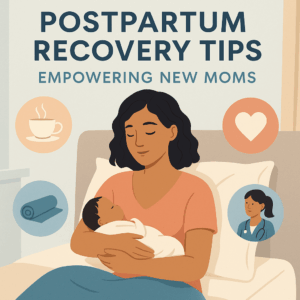Baby Sleep Patterns and Common Regressions

Just when you thought your newborn was an amazing sleeper, he or she suddenly begins waking during the night, fighting naps, or refusing to sleep at all. This is common behavior during the first year of your baby’s life. By knowing typical newborn sleep patterns and when sleep regressions can occur in the first year, you’ll understand why your baby is going through this and what it means for healthy development.
You’ll also feel a little less alone.
Typical baby sleep patterns from 0 to 6 months
In the first few weeks, a newborn’s sleep pattern is quite irregular. Your infant will sleep about 16 to 18 hours a day. They’ll wake for a short period (30 to 45 minutes) to eat and to fall back asleep. By the end of the first month, they drop down to about 15 to 17 hours of sleep a day.
At 3 months, many babies have started settling into a sleeping pattern. They’re able to stay awake a bit longer between sleeps, but still no more than an hour or two at a time. Total hours of sleep are about 14 to 16 hours, so they’ll still be asleep for most of the day.
From 4 to 6 months, sleep patterns can change depending on your baby. Every baby’s napping and sleeping schedule is different. Total hours of sleep are now about 12 to 15 hours per day, and baby can stay awake for a few hours between sleeps. However, 4 months is when sleep regressions can commonly start occurring.
What is a sleep regression?
What is a sleep regression? A sleep regression is a brief period of time in which your baby or toddler, after previously sleeping well, suddenly wakes during the night and refuses to sleep. A sleep regression can last for a few weeks to over a month. Even though the term “regression” sounds scary, parents should know that this kind of sleep behavior is normal! Baby sleep patterns change throughout their first year, and sleep regressions are typically a sign that they are developing as they should. Each sleep regression can be linked to the developmental change and growth spurt happening in your baby. This is why a sleep plan needs to be unique to your baby’s, age, weight, and developmental stage.
Common sleep regressions in the first year
The first sleep regression often happens at 4 months. It can be tough for new parents to deal with when they’ve got a napping and feeding schedule down to a science. But a sleep regression at this age means that your baby is growing and developing at a healthy pace. Baby’s brain is becoming more alert and active, causing it to shift from light sleep to deep sleep. This is a great sign of where your baby is at and how your baby is graduating to the next stage in development. At this stage most wakes are still due to caloric needs as your baby is still trying very hard to consume calories with milk and needing a high volume.
The next one is right around 6 months. This one is a bit easier to identify because the wakes in the night are often what we call “itchy legs” . If you notice your baby kicking and thrashing around you will know what I am talking about. Or if you have ever woken up to a the loud thump of them slamming their legs against the mattress with their eyes still closed most of the time. This just means your baby is trying to master new skills and have better control over their limbs. They truly just need more floor time to practice.
The next sleep regression can happen at 8 to 10 months. At this stage, your baby is absorbing information and learning how to do fundamental things: crawling, pulling themselves up to stand, sitting up, and recognizing language or objects. Separation anxiety can develop during this time, so your baby may start crying and fussing when you leave the room. Their brain is rapidly developing, so it may just be too active to settle down for sleep.
A sleep regression at 12 months is less common; not every baby will go through one. This is the age, babies might begin transitioning to one nap per day. However, they may not be ready for a single nap and may get fussy or refuse to sleep. Teething can also disrupt your baby’s sleep pattern at this age.
[elfsight_youtube_gallery id=”4″]
Not sure what to do during a sleep regression?
Parents can become frustrated with changing baby sleep patterns, but it’s important to remember that sleep regressions are common and that they don’t last forever. Be patient and calm with your baby to soothe their nervous system — and yours.
Being aware of growth spurts and appropriate feeding schedules can help prevent frequent waking at night. And finally, don’t be afraid to ask for help from your spouse, or from a specialist.
Night nannies or sleep specialists can help you understand your baby’s sleep patterns and work through any sleep regressions. They can give you peace of mind and help you sleep too.


